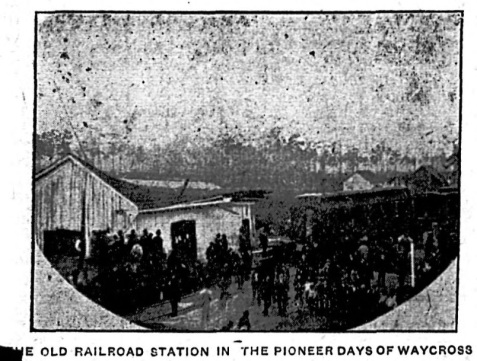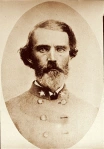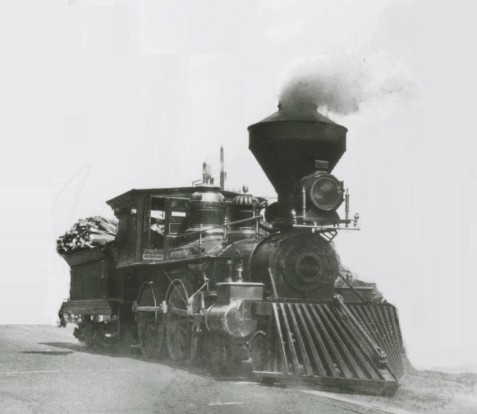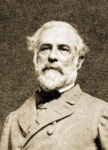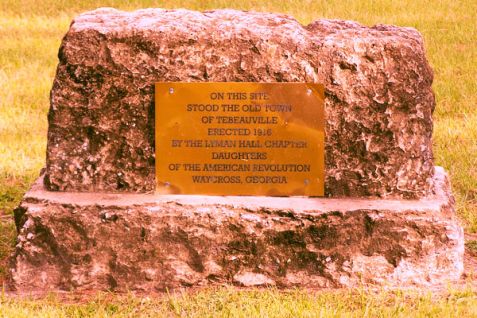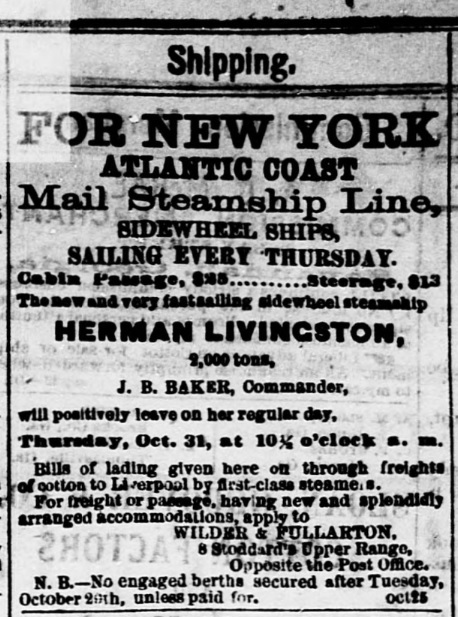| Date…………………….. |
Event |
| 1860 Nov 28 |
Muster Roll of Levi J. Knight’s Company, the Berrien Minute Men |
| 1860 Dec 10 |
Organization of Knight’s Company of Berrien Minute Men, Nashville, GA |
| 1861 Jan 19 |
Georgia Ordinance of Secession passed ~ John C. Lamb, a signer |
| 1861 May |
Grand Rally at Milltown for Knight’s Company of Berrien Minute Men |
| 1861 May 23 |
Knight’s Company of Berrien Minute Men in camp and drilling at Nashville, GA |
| 1861 July |
Knight’s Company of Berrien Minute Men encamped with other Georgia companies at Brunswick, GA |
| 1861 Summer |
Knight’s Company of Berrien Minute Men muster in at Savannah, GA |
| |
|
| 1861 July 30 |
Knight’s Company of Berrien Minute Men and other companies of the 13th Regiment arrive at Savannah, GA via the Albany & Gulf Railroad; Capt L.J. Knight receives equipment issued for the company |
| 1861 August |
Knight’s Company of Berrien Minute Men, at Savannah, GA |
| 1861 August 1 |
Levi J. Knight formally elected Captain of his company |
| 1861 August 19 |
Knight’s company of Berrien Minute Men and other companies formally mustered in to the 13th Georgia Regiment, Colonel Cary W. Styles, Commanding |
| 1861 August 20 |
Berrien Minute Men transported via Brunswick & Florida Railroad (South Georgia & Florida R.R.) from station No. 9 at Tebeauville (now Waycross), GA some 60 miles to Brunswick, GA |
| 1861 August 28, or abt |
Berrien Minute Men & 13th Regiment encamped “in the neighborhood of Brunswick” |
| 1861 Fall |
A second company of Berrien Minute Men was organized – successively known as Company B Berrien Minute Men, Captain Lamb’s Company, Company D, and Company K 29th GA Regiment. |
| 1861 October 1 |
Men enlisted in Berrien County in Captain Lambs’ Company; about this time Company C present on Sapelo Island. |
| 1861 October 2 |
Levi J. Knight elected Major of the 29th GA Regiment; |
| 1861 October 5, Monday |
|
| 1861 October 6 |
|
1861 October 7,
Monday |
Lamb’s Company of Berrien Minute Men arrived Savannah, GA, 7-8:00 in the evening; |
1861 October 8,
Tuesday |
Lamb’s Company mustered in as Company D, 29th GA Regiment. (This company was later known as Company K.) Company D steamed from Savannah late Tuesday evening headed for Sapelo Island, GA |
|
1861 October 9, Wednesday
|
After a 10 hour steamboat ride, Company D landed on Sapelo Island at daybreak Oct 9th |
| 1861 October 10, Thursday |
Company D at Camp Spalding, Sapelo Island; Company C at Blackbeard Island |
| 1861 October 11, Friday |
Berrien Minute Men, Company C, 29th GA Regt moved to Sapelo Battery, GA |
| 1861 October 12 |
|
| 1861 October 14 |
John C. Lamb formally elected captain of his company of Berrien Minute Men “Company B” (Company D, later Company K) |
| 1861 October 16 |
At post of Sapelo Island Battery, GA; 2nd Lt. Levi J. Knight, Jr. arrived at this post |
| 1861 October 22 |
Berrien Minute Men, Co. C At Camp Spaulding, Sapelo Island, GA; Thomas S. Wylly elected Captain |
| 1861 Winter |
Berrien Minute Men Company C at battery on southern end of Blackbeard Island, GA |
| 1861 Nov 6 |
Levi J. Knight,Sr accepts formal commission as Major of the 29th Regiment |
| 1861 Nov 7 |
Jonathan D. Knight transferred from Company C of Berrien Minute Men & elected 2nd Sgt of Lamb’s Company of Berrien Minute Men Company “D” |
| 1861 Nov 28 |
Col. Randolph Spalding with companies of the 29th GA regt at Camp Lawton near Savannah. It appears the two companies of Berrien Minute Men and two other companies remain near Darien, GA |
| 1861 December 1 |
Near Darien, GA |
| 1861 December 18 |
At Camp Security, GA |
| 1862 January |
Darien, GA; Company C (later G) officer’s purchase of “subsistence stores…for their own use and the use of their families” |
| 1862 January 22 |
At Masonboro Sound, six miles east of Wilmington, NC |
| 1862 February 4 |
At Darien, GA; John Knight discharged with hepatitis |
| 1862 February 17 |
At Darien, GA Co D, (Later K); commutation of beef ration, Capt. J. C. Lamb |
| 1862 February 20 |
Camp Wilson, GA; Company C & Company D, receipt of firewood by Major Levi J. Knight, Sr; Company D, receipt of fuel, Capt J. C. Lamb Camp Tattnall, Company C, receipt of shoes, Capt T.S. Wylly |
| 1862 February 21 |
Captain Wylly’s Company of Berrien Minute Men ordered from Camp Wilson on the night of the 21st to Fort Jackson to relieve the Savannah Republican Blues |
| 1862 February 22 |
29th Regiment moved from Camp Wilson to new Camp Tattnall |
| 1862 March 7 |
Company C – “the old Berrien Company” “Captain Wylly’s Company” on Smith’s Island (Battery Lawton) supporting Fort Jackson |
| 1862 March |
Berrien Minute Men at Camp Tattnall, GA |
| 1862 March 13 |
Camp Tattnall, GA; Company D, receipt of firewood, Capt. Lamb |
| 1862 March 15 |
Company D, Camp Tattnall, GA; receipt of coffin, Capt. Lamb |
| 1862 March 16 |
Camp Tattnall, GA; Letter of Angus McDermid |
| 1862 March 18 |
Camp Tattnall, GA |
| 1862 March 20 |
Camp Tattnall, GA |
| 1862 March 24 |
Camp Tattnall, GA, Company D; receipt of lumber and shoes, Capt J.C. Lamb |
| 1862 March 26 |
Camp Tattnall, GA; Company D, receipt of coffin, Capt J. C. Lamb |
| 1862 March 28 |
Col. William J. Young appoints William F. Stark of Co. H as Commissary of the 29th Regt and requests a commission for same |
| 1862 April 1 |
At Camp Tattnall, GA; receipt of coffin, firewood, Maj. Lamb; forage |
| 1862 April 8 |
Asst Commissary W.F. Stark receiving regimental equipment at Camp Tattnall, GA |
| 1862 April 15 |
Asst Commissary W.F. Stark receiving regimental equipment at Camp Tattnall, GA |
| 1862 April 16 |
Berrien Minute Men, Company D, 29th Georgia Regiment moved to Causton’s Bluff |
| 1862 April 17 |
At Camp Tattnall, GA |
| 1862 April 18 |
At Causton’s Bluff, GA |
| 1862 April 23 |
At Causton’s Bluff, GA; Company D, receipt of supplies, Capt J. C. Lamb. “Captain Lamb’s Company has moved from Camp Tattnall to a place on the river below fort Jackson and about one mile and a half from our camps [Camps of the 50th Georgia Regiment] -Ezekiel Parrish, letter of April 23, 1862 |
| 1862 May |
Company C at Battery Lawton, Smiths Island
Company D at Causton’s Bluff near Savannah, GA, receipt of supplies, Capt Lamb |
| 1862 May 1 |
At Causton’s Bluff, GA; receipt of coffin, firewood, Maj. Lamb; forage |
| 1862 May 7 |
Company C – Levi J. Knight,Jr. elected Captain
– Barzilla Knight elected 2nd Lieutenant
Company D -Jonathan D. Knight, elected Lieutenant |
| 1862 May 7 |
At Camp Debtford election of officers were held May 7 Thomas S. Wylly elected captain of the Berrien Minute Men
Col. W. J. Young at Causton’s Bluff |
| 1862 May |
Company C & Capt Levi J. Knight, Jr. at Smith’s Island |
| 1862 May 8 |
29th regiment at Causton’s Bluff, GA; regiment on picket duty on Oatland and Whitemarsh islands |
| 1862 May 10 |
Company D (later K) at Camp Debtford Major Levi J. Knight resigns; John C. Lamb elected major of the Regiment;Major Lamb reported for duty at Advanced Batteries, Savannah River, Ga, in place of Major Knight resigned, not willing to be re-elected. |
| 1862 May 13 |
Major J.C. Lamb at Causton’s Bluff signs certificate of disability for G. W. Fletcher. |
| 1862 May 17 |
at Causton’s Bluff; Receipt of supplies by Capt J. D. Knight |
| 1862 May 19 |
Major Lamb absent at “Detached service on duty on Savannah River near Fort Jackson since 19th May, 1862 by verbal order Gen. W. D. Smith” |
| 1862 May 22 |
at Causton’s Bluff; Wiley E. Baxter elected 2nd Lieut. Co. K; Receipt of supplies by Capt J. D. Knight; receipt of supplies, Maj. |
| 1862 May 26 |
at Causton’s Bluff; receipt of supplies, Maj. J. C. Lamb |
| 1862 May 29 |
Asst Commissary W.F. Stark receiving regimental equipment at Caustons Bluff, GA |
| 1862 June |
Major Lamb in command Camp Mackey, Advanced Savannah River Batteries; Captain Levi J. Knight, Jr in command of Company C at Lawton Battery, Smith’s Island; Col.W.J. Young at Causton’s Bluff |
| 1862 June 1 |
Company D (later K) At Causton’s Bluff, near Savannah, GA; Receipt of fuel by Capt J. D. Knight |
| 1862 June 2 |
Company D (later K) at Causton’s Bluff, near Savannah, GA (at this time Causton’s Bluff is an open battery) |
| 1862 June |
Company D (later K) Berrien Minute Men at Camp Mackey, near Savannah, GA |
| 1862 June 9 |
Company C (later G) At Smith’s Island, near Savannah, GA; Harrison Jones discharged |
| 1862 June 12 |
Company D (later K) At Causton’s Bluff, near Savannah, GA |
| 1862 June 19 |
Company D (later K) At Causton’s Bluff, near Savannah, GA |
| 1862 June 26 |
Company D (later K) At Causton’s Bluff, near Savannah, GA |
| 1862 June 27 |
Company D (later K) At Causton’s Bluff, near Savannah, GA |
| 1862 July |
Company D (later K) At Causton’s Bluff, near Savannah, GA; Receipt of fuel by Capt J. D. Knight; Col. W. J. Young present |
| 1862 July 4 |
Independence Day at Causton’s Bluff, near Savannah, GA |
| 1862 July 5 |
At Causton’s Bluff, near Savannah, GA |
| 1862 July |
Major Lamb stationed at Camp Troup, but absent on temporary “detached service on Savannah River” ; Captain Levi J. Knight, Jr. & Company C (later G) at Camp Debtford |
| 1862 July |
Examination of Officers acting since election of May 7, 1862 |
| 1862 July 17 |
at Causton’s Bluff; receipt of picket tents by Capt J. D. Knight |
| 1862 July 19 |
at Causton’s Bluff; receipt of supplies by Maj. L. J. Knight |
| 1862 July 27 |
Picket duty on Whitemarsh Island below Causton’s Bluff and at Capers? Battery |
| 1862 July 30 |
At Causton’s Bluff, near Savannah, GA; receipt of coffin by Capt J. D. Knight |
| 1862 August |
Regimental station at Camp Troup, but Major Lamb absent on temporary “detached service on Savannah River” GA; Company C (later G) present at Camp Anderson |
| 1862 August 24, Sunday |
Roll call, “Inspection and Review this morning as usual.” W.F. Stark preached in the morning. “.. Bro. Daniel preached in the afternoon.” |
| 1862 August 25 |
“There has been some heavy firing this evening towards Hilton Head” presumed to be Federal firing on blockade runners – W.F. Stark |
| 1862 August 26 |
Regiment begins move in a hard rain to camp “on the Thunderbolt Road, three miles from Savannah”; CSS “Savannah went down St. Augustine Creek headed toward Thunderbolt,” observed from Causton’s Bluff; “Yanks have been firing guns all day” |
| 1862 August 27 |
Company C still At Causton’s Bluff, near Savannah, GA; “Weather continues wet and disagreeable” but the regimental move continues. |
| 1862 August 28 |
“A part of Capt. Knight’s Company & part of the staff moved today” along with Capt. Henderson’s and Capt. Turner’s companies. “The balance will get off tomorrow.” – W.F. Stark |
| 1862 August 29 |
Capt Levi J. Knight, Jr stationed at Camp Anderson, but absent sick in Savannah |
| 1862 September |
|
| 1862 September 1 |
At a camp three miles from Savannah, GA on Skidaway shell road. ; Company C (later G) present at Camp Anderson |
| 1862 September 2 |
At a camp two miles from Savannah, GA on Thunderbolt shell road. ; Company C (later G) present at Camp Anderson |
| 1862 September 5 |
At Causton’s Bluff; receipt of wall tent by Capt. J. D. Knight |
| 1862 September 11 |
At a camp near Savannah, GA |
| 1862 September 13 |
At Camp Troupe |
| 1862 September |
At Causton’s Bluff; receipt of coffin by Capt J. D. Knight |
| 1862 September 25 |
General Mercer reports seven companies 29th Georgia Regiment at Causton’s Bluff, along with Eight companies 25th Georgia Regiment and three unattached companies (apparently including Company F, 1st Georgia Reserves) |
| 1862 October |
Company C (later G) & Captain Levi J. Knight, Jr at Lawton Battery, Smith’s Island |
| 1862 October 1 |
Pickets of Berrien Minute Men Company D, 29th Georgia Regiment fire on a Federal boat approaching Proctor’s Point. |
| 1862 October 3 |
Maj. J. C. Lamb receives supplies at Causton’s Bluff; Regt. still encamped on Shell Bluff Road; Receives orders in the evening to prepare for departure to Jacksonville, FL |
| 1862 October 4 |
29th Regiment at Camp Troup |
| 1862 October 4 |
Company D (later K) In route by train from Savannah to Grooverville, Brooks County; marched to Monticello, FL |
| 1862 October 5 |
Company D (later K) In route by train from Monticello to Lake City, FL |
| 1862 October 6 |
Company D (later K) In route by train from Lake City to Camp near Baldwin, FL |
| 1862 October 7 |
Company D (later K) Picket duty near Baldwin, FL |
| 1862 October 8 |
29th Regiment At Camp Finnegan FL; Issue of supplies by Commissary W.F. Stark |
| 1862 October 9 |
29th Regiment At Camp Finnegan FL; Issue of supplies by Commissary W.F. Stark |
| 1862 October 10 |
Company D (later K) At Camp Finnegan FL; receipt of supplies by Capt J. D. Knight; 29th Regiment At Camp Finnegan FL; Issue of supplies by Commissary W.F. Stark |
| 1862 October 13 |
receipt of fresh beef by Commissary W.F. Stark at Groover Station, Atlantic and Gulf Railroad, ~170 miles from Savannah |
| 1862 October 20 |
Major Lamb transferred from Savannah River Batteries apparently returning to station near Savannah |
| 1862 October 21 |
Company K (formerly D) Return from expedition to Jacksonville, FL |
| 1862 October 22 |
At midnight the 29th and 30th Regiment to start by train for Pocotaglio to support Col. Walkers position |
| 1862 October 25 |
Berrien Minute Men Company K at “a camp near Savannah, GA” |
| 1862 November |
Company G (formerly C) & Captain Levi J. Knight, Jr present at Smith’s Island, but Capt L.J. Knight, Jr “in arrest”;
Col W J Young at Camp Young |
| 1862 November 1 |
Company K (formerly D) at Camp on Shell Road receipt of fuel by Capt J. D. Knight at Causton’s Bluff; receipt of forage, Maj J. C. Lamb |
| 1862 November |
Major Lamb Stationed at Camp Young three miles from Savannah |
| 1862 November 9 |
At a camp near Savannah, GA |
| 1862 November 10 |
Company K at a “camp near Savannah”, GA |
| 1862 November 11 |
At a camp near Savannah, GA. Benjamin S. Garrett, Company K, writes, “We can her the canon agin at a distance. Suposed to be at Coffees bluf a bout a mile from here….Wee do not have half a nuf to eat. Only as we by [buy] it.” |
| 1862 November 14 |
Camp Young, Near Savannah, GA; Receipt of supplies by Capt J. D. Knight |
| 1862 November 14 |
Causton’s Bluff, receipt of hospital tent by Maj. J. C. Lamb |
| 1862 November 21 |
Camp Young, Near Savannah, GA; receipt of tents by Capt J. D Knight |
| 1862 November 25 |
Near Savannah, GA |
| 1862 November 28 |
Savannah River Batteries |
| 1862 December |
Company G at Lawton Battery |
| 1862 December 1 |
Camp Young, receipt of forage, Major Young |
| 1862 December 14 |
Company K Embarked 8:00pm by train to Wilmington, NC Sunday Dec 14 |
| 1862 December 15 |
Company K in transit by train to Wilmington, NC |
| 1862 December 16 |
Company K in transit by train to Wilmington, NC |
| 1862 December 17 |
Company K in transit by train to Wilmington, NC |
| 1862 December 18 |
Company K in transit by train to Wilmington, NC; Berrien Minute Men Co. G, present at Lawton Battery, but Capt Levi J. Knight, Jr., suspended from rank & commission by order Genl Beauregard |
| 1862 December 19 |
Company K arrives at Wilmington, NC on Friday evening, Dec 19 |
| 1862 December 20 |
Company K At Kingsville [Kinston], NC |
| 1862 December 22 |
Company K at Camp Clingman, two miles from the railroad station at Wilmington; Lt Barzilla Knight, commanding Co. K, receipt of 45 blankets at Wilmington, NC |
| 1862 December ? |
Col W J Young & Major Lamb present at station Camp Clingman [encampment of General Thomas Lanier Clingman’s Brigade] |
| 1862 Dec 26 Friday |
Company K went to Kinston, NC |
| 1862 Dec 27 Saturday |
Company K at Kinston, NC |
| 1862 December 28 Sunday |
Company K at Kinston, NC – boarded train for Savannah at 7:00pm in letters of W.W. Knight |
| 1862 December 29 Monday |
Company K in transit by train to Savannah |
| 1862 December 30 Tuesday |
Company K arrived by train at Savannah; “back at Camp Young Tuesday night 9:00 pm” |
| 1862 December 31 |
Elbert J. Chapman, “Old Yaller” AWOL |
| 1863 January |
Camp Young, GA; receipt of fuel, Major Lamb |
| 1863 January 1 |
Camp Young, GA; receipt of forage, Company D; receipt of forage, Major Lamb |
| 1863 January 3 |
Berrien Minute Men Co K returned to Camp Young, near Savannah, GA |
| 1863 January 7 |
at Camp Young; receipt of supplies by Capt J. D. Knight |
| 1863 January 7 |
In route to Wilmington, NC |
| 1863 January 12 |
At Wilmington, NC; receipt of salt by Capt J. D. Knight |
| 1863 January 15 |
at Camp Holmes; Receipt of supplies by Capt J. D. Knight |
| 1863 January 21 |
On station at Wilmington, NC |
| 1863 January 22 |
Receipt of supplies by Capt J. D. Knight at Camp Holmes |
| 1863 January 31 |
Receipt of supplies by Capt J. D. Knight at Camp Holmes |
| 1863 February |
On station at Wilmington, NC |
| 1863 Feb 11 |
Camp Young, near Savannah, GA; receipt of forage, Major Lamb |
| 1863 Feb 12 |
Camp Young, near Savannah, GA; receipt of stationary by Capt J. D. Knight |
| 1863 Feb 13 |
Capt J. D. Knight and Sgt Jonas Tomlinson detailed for 15 days “gathering conscripts” in Berrien County, GA |
| 1863 February 20 |
At General Review of Infantry and Cavalry at Savannah, GA |
| 1863 Feb 24 |
At Camp Young, near Savannah, GA; receipt of stationary supplies, Major Lamb |
| 1863 Feb 25 |
At Camp Young, near Savannah, GA |
| 1863 March 1 |
Company C At Camp Young, near Savannah, GA, 1st Lieut. Edwin B. Carroll, comdg |
| 1863 March 3 |
At Genesis Point [later named Fort McAllister], Near Savannah, GA |
| 1863 March 6 |
At Camp Young, near Savannah, GA |
| 1863 March |
At Camp Young, receipt of forage, Major Lamb |
| 1863 March 12 |
Reward offered for deserters from Camp Young, near Savannah, GA |
| 1863 March 13 |
At Camp Young, near Savannah, GA |
| 1863 March 14 |
Inspection of 29th GA Regiment at Camp Young, 3 miles from Savannah, GA |
| 1863 March 17 |
At Camp Young, 3 miles from Savannah, GA |
| 1863 March 19 |
At Camp Young, 3 miles from Savannah, GA |
| 1863 March 26 |
Angus McDermid, Co. K, near Charleston, SC |
| 1863 March 27 |
At Camp Young, near Savannah, GA |
| 1863 April 1 |
At Camp Young, near Savannah, GA; Receipt of fuel by Capt J. D. Knight; Receipt for supplies, Major Lamb |
| 1863 April 2 |
At Camp Young, near Savannah, GA |
| 1863 April 9 |
Berrien Minute Men & brigade dispatched to Charleston |
| 1863 April 11 |
29th Regiment encamped at Morris Island, SC four miles from Charleston |
| 1863 April 19 |
Returned to Savannah, GA |
| 1863 April 27 |
Dispatched to Pocotaligo, SC |
| 1863 April 29 |
at Coosawhatchie, SC; receipt of supplies by Captain J. D. Knight |
| 1863 May 4 |
Returned to Savannah, GA |
| 1863 May |
Berrien Minute Men and the 29th GA Regt departed Savannah for Jackson, MS |
| 1863 May 1 |
At Vaughan Station, MS about 32 miles east of Yazoo City and 1 mile west of Big Black River ; receipt of forage, Company D; Receipt of forage for private horses, Major Lamb |
| 1863 May 12 |
At McDowell’s Landing, MS |
| 1863 May 13 |
Arrived at Meridian, MS |
| 1863 May 14 |
In route by train toward Jackson, MS |
| 1863 May 15 |
At Forest City, MS |
| 1863 May 17 |
“fought all day…the battle was awful |
| 1863 May 28 |
At Deaconsville, MS about 20 miles east of Yazoo City, “six miles west of Vanus Station”; Deserter Elbert J. Chapman captured |
| 1863 May 29 |
Departed Camp near Deaconsville, MS; |
| 1863 May 30 |
On the march |
| 1863 June 3 |
Camp near Yazoo City, MS |
| 1863 June 4 |
moved to Camp three miles south of Yazoo City, MS |
| 1863 June 5 |
Camp near Yazoo City, MS (three miles south) |
| 1863 June 18 |
At Vernon City, MS |
| 1863 June 24 |
Camp near Vernon, MS; Captain J.D. Knight receives supplies |
| 1863 July 2 |
At a camp in the field, 25 miles from Vicksburg, MS |
| 1863 July 5 |
At Big Black River, MS |
| 1863 July 6 |
Withdrawn from Big Black River, MS |
| 1863 July 7 |
Marching in retreat toward Jackson, MS |
| 1863 July 8 |
Arrived at Jackson, MS |
| 1863 July 9 |
Company K, A day of rest; Company G (formerly C) at Savannah, requisition for stationary, Capt E.B. Carroll, comdg |
| 1863 July 10 |
Ordered to the line of battle near Jackson, MS |
| 1863 July 11 |
Supporting artillery batteries |
| 1863 July 12 |
Supporting artillery batteries on the left of Walker’s Division |
| 1863 July 13 |
Supporting artillery batteries on the left of Walker’s Division; |
| 1863 July 13 |
Major Lamb killed in retreat from Vicksburg, MS; Company G in Savannah, receipt for stores, Capt E.B. Carroll, cmdg |
| 1863 July 13 |
Retreated to a position “across railroad bank”; supporting artillery |
| 1863 July 14 |
Supporting artillery at railroad bank near Jackson, MS |
| 1863 July 15 |
Supporting artillery at railroad bank near Jackson, MS |
| 1863 July 16 |
Supporting artillery at railroad bank near Jackson, MS |
| 1863 July 17 |
Retreating from Jackson, MS |
| 1863 July 19 |
At a camp in the field; receipt of clothes; receipt by Capt J. D. Knight of equipment replacements for articles lost in retreat from Jackson |
| 1863 July 20 |
At a camp in the field near Forest City, MS |
| 1863 July 21 |
Deserter Elbert J. Chapman executed |
| 1863 July 22 |
At Scott County, MS |
| 1863 July 23 |
Camp near Forrest City, Scott County MS; |
| 1863 August 10 |
Company K, Camp near Morton, MS; “Camp in Field” Expense Voucher of Capt J, D. Knight |
| 1863 August 15 |
Company G (formerly C) in Savannah, special requisition of materials, Capt. E.B. Carroll commanding |
| 1863 August 20 |
Company G (formerly C) in Savannah, special requisition of clothing, Capt. E.B. Carroll commanding |
| 1863 August 21 |
Company K Receipt of supplies at Morton MS |
| 1863 August 23 |
Company K Embarked train in MS bound for Atlanta |
| 1863 August 25 |
Company G (formerly C) in Savannah, receipt of expenses, Capt. E.B. Carroll commanding |
| 1863 September |
Company G (formerly C) in Savannah, receipt of firewood, Capt. E.B. Carroll commanding |
| 1863 September 5 |
Company K (formerly D) at camp in the field; receipt of shoes, William W. Knight, 2nd Sgt commanding |
| 1863 September 7 |
Duty at Battery Cheves |
| 1863 September 15 |
James Island, SC; Magazine explosion kills Seaborn J. Lastinger |
| 1863 September 19 |
In battle at Chickamauga; Col.Young lost right arm & resigned. |
| 1863 October 15 |
Company G (formerly C) at Savannah – reciept of shoes, Capt. E. B. Carroll, comdg |
| 1863 October 18 |
Camp Near Chattanooga, TN |
| 1863 October 22 |
Camp Near Chattanooga, TN |
| 1863 October 31 |
Company K (formerly D)In the field; receipt of clothing “the men being in a destitute condition” Sgt William W. Knight commanding |
| 1863 November 2 |
Company G (formerly C) at Savannah – receipt of stores, Capt. E. B. Carroll, comdg |
| 1863 November 10 |
Company G (formerly C) at Savannah – receipt of padlocks for commissary house, Capt. E. B. Carroll, comdg |
| 1863 November 24 |
Near Missionary Ridge |
| 1863 November 25 |
Near Missionary Ridge |
| 1863 December 6 |
Company K (formerly D) Dalton, GA; receipt of clothing, on account of “the destitution of the men,” 2nd Sgt William Washington Knight, commanding |
| 1863 December 13 |
Company G (formerly C) at Lawton Battery – Capt. E.B. Carroll requests 20 days leave. |
| 1863 December 31 |
Dalton, GA; Capt J. D. Knight purchased new uniform |
| 1864 January |
In winter quarters at camp near Dalton, GA |
| 1864 January 1 |
Company G (formerly C) in Savannah, receipt of stationary, Capt E.B. Carroll, cmdg |
| 1864 January 12 |
Company K, Dalton, GA, Capt J. D. Knight purchased new shoes |
| 1864 February 15 |
Company G (formerly C) in Savannah, receipt of shoes and blankets, Capt E.B. Carroll, cmdg |
| 1864 February 29 |
near Dalton, GA |
| 1864 March 12 |
Dalton, GA |
| 1864 March 30 |
near Dalton, GA |
| 1864 April |
Company G (formerly C) at Lawton Battery, receipt of firewood, capt E.B. Carroll, comdg |
| 1864 April 1 |
Company G (formerly C) at Savannah, receipt of coffin & drum, administrative supplies, capt E.B. Carroll, comdg |
| 1864 April 9 |
Company G (formerly C) at Savannah, receipt of materials, capt E.B. Carroll, comdg |
| 1864 April 26 |
Company G (formerly C) at Savannah, receipt of ammunition, capt E.B. Carroll, comdg |
| 1864 April 26 |
Company G (formerly C) at Savannah, receipt of equipment, capt E.B. Carroll, comdg; Company G. ends detached duty in Savannah to rejoin the 29th GA Regiment |
| 1864 April 30 |
provost duty in Dalton, GA |
| 1864 May |
Retreating from Dalton, GA |
| 1864, May 11 |
In battle at Resaca, GA |
| 1864 May 16 |
Camp near Calhoon, GA |
| 1864, May 17 |
In battle at Adairsville, GA |
| 1864 May 18 |
Camp in the field near Cassville, GA |
| 1864 May 21 |
Camp in the field near Etowah Iron Works. |
| 1864 May 29 |
Forsyth, GA |
| 1864 June 1 |
Camp near Dallas, GA |
| 1864 June 5 |
Camp in the field near Acworth, GA |
| 1864 June 15 |
In line of battle; near Pine Mountain, GA |
| 1864 June 16 |
In line of battle near Marietta, GA |
| 1864 June 17 |
Camp near Marietta, GA |
| 1864 June 19 |
In line of battle near Marietta, GA |
| 1864 June 20 |
In line of battle near Marietta, GA |
| 1864 June 21 |
In line of battle near Marietta, GA |
| 1864 June 22 |
In line of battle near Marietta, GA |
| 1864, June 23 |
Battlefield near Marietta, GA |
| 1864 June 24 |
Battlefield near Marietta, GA |
| 1864 June 26 |
Supporting General Hindman’s Division |
| 1864 June 27 |
At Kennesaw Mountain, GA |
| 1864 June 28 |
Camp near Marietta, GA |
| 1864 July 2 |
In line of battle near Marietta, GA |
| 1864 July 3 |
In line of battle near Marietta, GA |
| 1864 July 4 |
In line of battle, four miles below Marietta |
| 1864 July 5 |
Withdrawn to works near Chattahoochee River, GA |
| 1864 July 7 |
Battlefield near Chattahoochee River, GA |
| 1864 July 9 |
Fell back to pickets south of Chattahoochee River |
| 1864 July 11 |
Camp in the field, near Atlanta, GA |
| 1864 July 19 |
In Line of battle near Chattahoochee River |
| 1864 July 20 |
In line of battle at Battle of Peachtree Creek |
| 1864 July 21 |
In line of battle near Atlanta |
| 1864 July 22 |
Company G and K At the Battle of Atlanta, near Decatur, GA. Capture of Edwin B. Carroll |
| 1864 July 29 |
Camp near Atlanta, GA |
| 1864 August 1 |
Officers at Johnson’s Island Military Prison |
| 1864 August 7 |
Near Atlanta, GA; “fought the Yankees” |
| 1864 August 8 |
Camp in the field near Atlanta, GA |
| 1864 August 12 |
Camp in the field near Atlanta, GA |
| 1864 August 17 |
Inspection report Utoy Church, Atlanta |
| 1864 August 26 |
Camp in the field near Atlanta, GA |
| 1864 August 31 |
Battle of Jonesboro, GA |
| 1864 September 2 |
Lovejoy Station, GA |
| 1864 October 19 |
Skirmish at Little River, AL |
| 1864 November 29 |
Springhill, TN |
| 1864 November 30 |
Franklin, TN |
| 1864 December 4 |
Overall’s Creek, TN |
| 1864 December 7 |
In battle at Murphreesboro |
| 1864 December 16 |
In battle at Nashville, TN; 29th regiment surrounded and captured |


